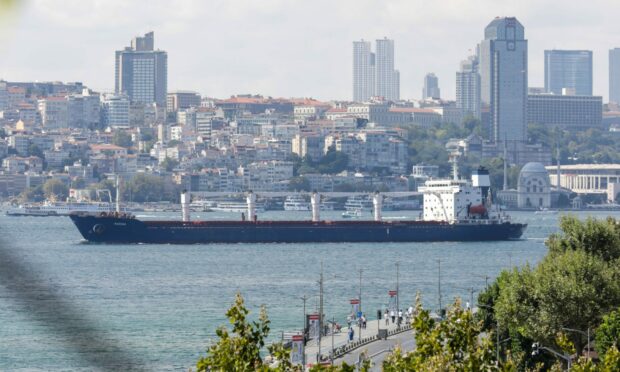August is a time-out period in Brussels, but the same problems will confront European Commission officials and politicians when it is back to business in September.
Two issues are pulling in opposite directions: green targets linked to a significant cut in carbon emissions by 2030; and food security.
While officials are claiming green policies will not be altered, ministers are less certain.
They have already successfully pressed for set-aside to be scrapped for 2023; they have made clear a 50% reduction in chemical pesticides cannot happen until it can be demonstrated that alternatives are available and that this would not undermine the competitiveness of European agriculture.
To date in this debate Farmers have been losing in this debate but, come September, that might change. Either way, a long awaited showdown between these policy priorities is looming.
Grain cargo
There was a general global welcome for the first ship carrying grain to leave the previously blockaded Black Sea ports in Ukraine.
The hope is this will be the first of many ships helping to release millions of tonnes of grain in Ukrainian silos. However, there is a huge question mark over whether it will be possible to refill those silos from this year’s harvest as Ukraine’s farmers faced shortages of seeds, agrochemicals, fertiliser and even fuel.
Even if it does, it is unlikely to mean the millions of tonnes usually available from what was rightly dubbed Europe’s bread basket.
Tory leadership favourite Liz Truss recently used a photo-opportunity meeting at a livestock event to pledge a reduction in red tape for farmers. She said this would free UK farmers from pre-Brexit regulations and allow more food to be produced to tackle food security.
Brexit
This went down well with an unquestioning audience but, in reality, much of the red tape is not a hangover from EU membership, but self-imposed under new rules introduced since Brexit.
Truss overlooked the reality that as prime minister she could only influence agricultural policy in England.
More fundamentally, the red tape she is promising to curb comes from rules around green compliance, not food production. She has offered no hint, let alone commitment, to back-pedal on the Boris Johnson vision of UK agriculture exceeding even the EU’s green targets.
